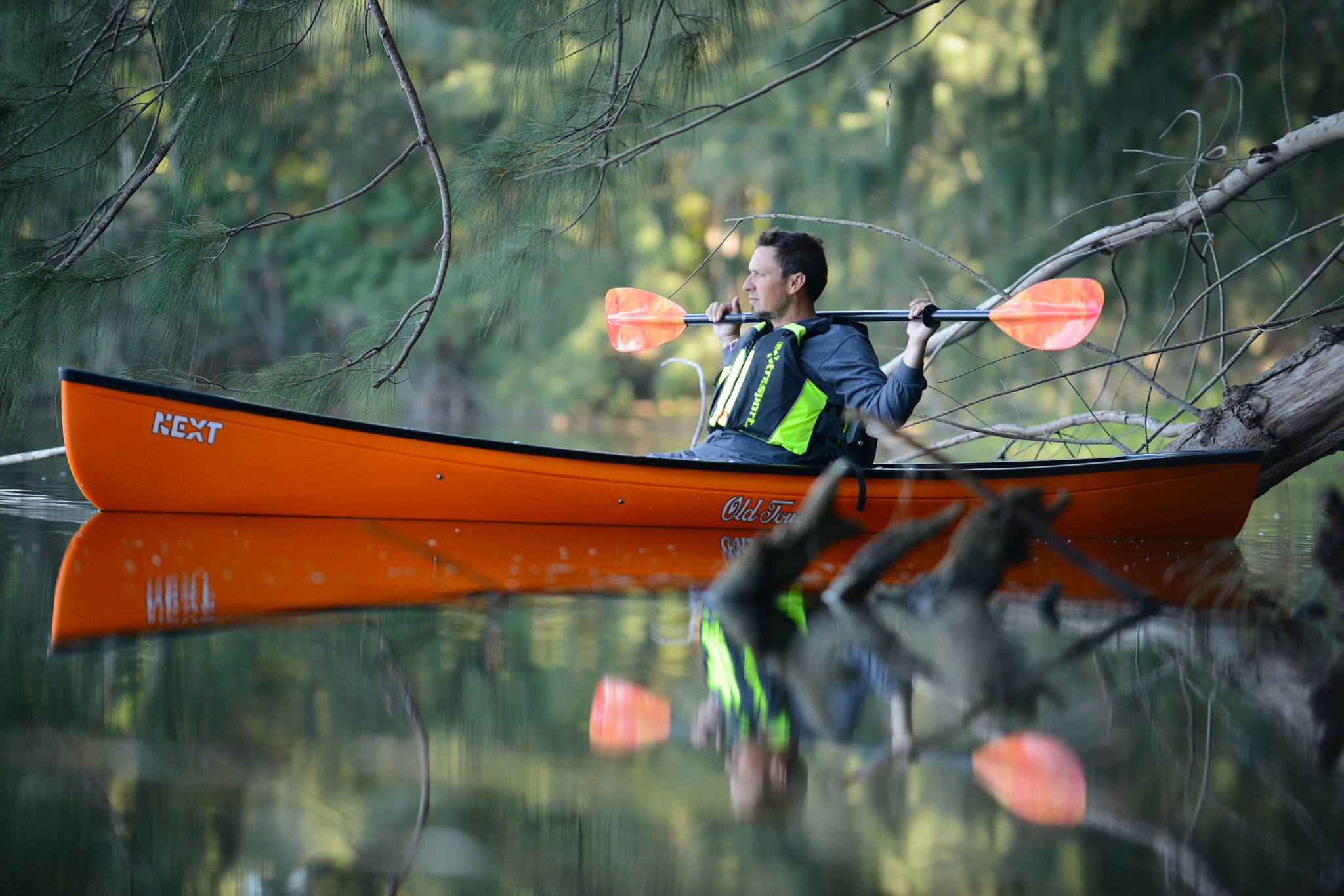Written by Trevor Clark
ENO's Guide to Planning a First Aid Kit
Note from ENO: As a co-sponsor, we will be following Trevor’s adventure on the Alabama Scenic River Trail over the next few months. This is the third chapter of his story.
Being prepared to handle your own first aid needs is an important step when going on any trip, especially a solo trip. If you feel you are lacking in this area I recommend taking a class on it. I received training in wilderness first aid via the Boy Scouts and supplemented that info with talks by herbalists who specialize in first aid. You will be amazed at what you remember when you are called to action. I didn’t particularly think that I would remember the stuff I learned in the Scouts, but it all comes rushing back when you need it most.
The most memorable, or rather traumatic, occasion was when my older brother fell 120 feet off a waterfall and landed head first on a rock. I climbed down the rock face, removed his submersed body from the crimson streaked pool at the base of the waterfall and proceeded to wash the debris out of the newly punched hole in his skull. I remembered to gently wash, let the wound bleed (self-wash), and repeat until the wound was debris free. After I finished cleaning the wound I replaced his peeled back scalp and secured it with a bandage made of my shirt. He sustained a pretty severe concussion and was in a state of fluctuating consciousness. I laid him on relatively flat ground and kept him from moving. I had no idea what else he had broken. These and various other first aid techniques came back to me while I was in shock.
What Kind of First Aid Kit?
You need to decide what kind of first aid kit you are putting together before you start. Look at what event you are making the kit for. Is it a car kit for general first aid? Is it for a weekend trip? Is it for an extended trip? How many people are you theoretically preparing to help? Answering these questions will help determine the size and content of the kit you are making. I am making a small kit for a 2 month solo canoe trip. I purchased a large belt pack at the thrift store to hold my kit.
The next step is to make a list of possible problems you could encounter. This will enable you to decide what medicines and supplies to pack. Below is my list of possible problems.
- Injuries- Cuts, wounds, burns, broken bones
- Pain – muscle pain, broken bones, food poisoning, dirty water
- GI Upset – food poisoning, dirty water, inflammation, diarrhea
- Infection – internal and external
- Stings and Bites – Bees, wasps, snakes, chiggers, mosquitoes, ticks
- Chronic Issues – fatigue, muscle pain, neuropathy (induced by repetitive motion)
It is also important to think about how far you will be at any given point on your trip from professional medical services. My longest point of no contact will be around 4-5 days.
Botanical Medicine vs. Pharmaceutical Medicine
People love to ask variations on the question, ‘How much can you really treat effectively with herbs?’ The answer is, most things! Botanical medicine is very effective at treating a host of ailments and most of the time it is safer. An experienced herbalists will know the limitations of what they can do and will refer out as necessary. The goal of medicine should be to give ease from ailments and heal the patient, not some political or personal agenda. To limit oneself to just herbs or just pharmaceuticals is an extreme position to take and not in the best interest of the patient. Extremism in any direction is a dangerous thing. I myself would be dead without insulin for my type 1 diabetes, however I would still be stuck in bed with chronic pain without botanical medicine. Included in this first aid kit are both types of medicines.
Medicine
I will give you the rationale behind the medicines I have included in my kit. The botanical medicine rational will be a mix of ethnobotanical, current clinical use and current research. As a matter of saving time I will forgo citing sources. There is a plethora of information available on the majority of these herbs in online herbals and on PubMed. For bulk herb purchases (4oz +) I like to use Mountain Rose Herbs and for smaller purchases (1oz to 3oz) I like to use Dandelion Botanical.
Botanical Medicine
Tincture of Oregon Grape Root (Mahonia spp), Young Alder Cones (Alnus rubra), Yarrow Aerial Parts (Achillea millefolium) – This tincture treats intestinal parasites, protozoa and bacterial infections. All three of these pathogenic microorganisms are possible to pick up from drinking unfiltered water. Works via a multi-pronged approach: toning and tightening of intestinal tissue lining, increases mucus and digestive juice production, and anti-microbial. This formula would be helpful in treating food poisoning as well. [Wildcrafted]
Tincture of Echinacea (Echinacea angustifolia) – This herb is largely known for its immune boosting effects, but it has a history of effective use for rattlesnake and spider bites. It works by denaturing a digestive enzyme in the venom as well as increasing production of a chemical in your body used in tissue repair. In Alabama there are 6 species of poisonous snakes. Of those six, five are in the pit viper subfamily Crotalinae. These 5 snake’s bites can be treated with this tincture by using both internally and externally. [Mountain Rose Herbs]
Tincture of Elephant’s Head (Pedicularis groenlandica) and Bracted Lousewort (Pedicularis bracteosa) – One of my favorite sub-alpine growing herbs to harvest in the spring. It is a wonderful muscluloskeletal relaxant. A great plant to take for sore muscles after a long day of physical exertion. [Wildcrafted]
Tincture of Wild Valerian (Valeriana sitchensis) and Indian Pipe (Monotropa uniflora) – Sleep formula for any restless nights I might encounter. Also can be used for mild pain. Believed to relax and sedate via GABA potentiation. [Wildcrafted]
Tincture of Ashwaganda (Withania somniferum) – This plant is from a class of herbs called adaptogens. This herb helps modify your bodies stress responses, acts as a trophorestorative for your adrenal glands and relieves fatigue while not directly stimulating the central nervous system. [Mountain Rose Herbs]
Oil of Black Cottonwood Leaf Buds (Populus trichocarpa) and St John’s Wort (Hypericum perforatum) – This oil is useful for muscle aches and pains as well as neuropathic pain. The Cottonwood contains chemicals similar to Aspirin. St John’s Wort is a very well-studied herb that increases levels of dopamine, serotonin and GABA amongst other things. [Wildcrafted]
Oil of Chaparral (Larrea tridentata) and Big Sagebrush (Artemesia tridentate) – This oil can be used in place of triple antibiotic ointment. Very strong antimicrobial and antifungal. And the smell is amazing! [Wildcrafted]
Kratom Leaves (Mitragyna speciosa) – This plant is a strong narcotic pain reliever. It is best reserved for medium to high level pain and severe diarrhea. It works on the opiate receptors and is addictive, so use accordingly. Herbalists have little they can use legally in the treatment of high level acute pain, as plants such as opium poppies have been criminalized. It is also very hard to get a prophylactic prescription from a doctor for a narcotic for your first aid kit due to tightened drug scheduling around narcotics. There are efforts under way in some states to criminalize this plant medicine due to people using it recreationally. There will always be people who use intoxicating plants recreationally. That doesn’t mean that we should ignore their medical value and deny people access.
Potassium Nitrate and Powdered Jimson Weed (Datura stramonium) – This is an old Eclectic doctor recipe for treating anaphylaxis, convulsive cough, spasmodic asthma and spasmodic pain. A low dose medicine that one should be very careful with due to it containing the tropane alkaloids atropine, hyoscyamine, and scopolamine. You place a pinch onto a bottle cap and light on fire, then hold under face and try and breathe in the fumes. Has an immediate broncho dilating effect. [Bastyr University garden]
Essential Oil of Lavender (Lavendula angustifolia) – A soothing topical treatment for burns. Also great for calming the nerves and for spastic GI inflammation. [Mountain Rose Herbs]
Essential Oil of Tea Tree (Melaleuca alternifolia) – I have used this e.o. diluted in a carrier oil as a mosquito, and no-see-um repellent while traveling in Central America. The only problem is you have to coat yourself in the oil. I’m not a huge fan of covering myself in oil, but I’m even less of a fan of bug bites! [Mountain Rose Herbs]
Root Powder of Tumeric (Curcuma longa) – A delicious spice I’m bringing along to make curry. It is also a very effective treatment for food poisoning. [Mountain Rose Herbs]
Root Powder of Marshmallow (Althea officinalis), Licorice (Glycyrrhiza glabra), and Ginger (Zingiber officinale) – You would mix this powder with water and drink to ease stomach inflammation. It is mucilaginous and therefore soothing to the inflamed GI tissue. The licorice and ginger are both carminative, and relieve nausea. [Mountain Rose Herbs and Dandelion Botanicals]
Felt of Amadou Mushroom (Fomes fomentarius) – The spongy trauma layer of this mushroom has been pounded into sheets and used as a cloth, tinder, and medicine for thousands of years. It was used by Hippocrates and even the 5,000 year old Otzi the Iceman was found to be carrying it. I have included a sheet in my kit to be used as a bandage for bleeding wounds. It acts as a styptic and seals off wounds within minutes while also providing antibacterial protection. It was so well known for this action that it was called ‘surgeons agaric’. Some people carry quickclot, I carry Amadou.
Pharmaceutical Medicine
Cipro (Ciprofloxacin) – A broad spectrum antibiotic, used internally, frequently used when bacterium is unknown. As my housemate told me, “It’s a badass killer.” This will be helpful if I start to show signs of an internal infection and my system is unresponsive to the botanical treatments I use.
Epinephrine – Used commonly for anaphylaxis. Injected subcutaneously or intramuscularly.
Tools, etc…
The rest of my first aid kit is relatively common equipment. I will list it out for use as a reference when building your own kit.
- Tweezers
- Sterilized individually wrapped Razors
- Sterilized Scalpel
- Antiseptics (iodine swabs, BZK wipes, isopropyl wipes, hand sanitizer)
- Various Size Gauze Pads
- Band aids
- Moleskin
- SAM Splint
- Irrigation syringe
- Intramuscular Syringe
- Liquid Bandage
- Eye Drops
- Small Mirror
- Magic Marker (for tracking swelling of bites)
- Lighters
- Super glue (use for small wounds that would require 5 stitches or less)
- Butterfly Stitches
- Activated Charcoal
- Fold-up Scissors
- Electrolyte Tablets
- Cloth Tape
- Compress Bandages
- Disposable Thermometers
Author Bio
Trevor Clark was born and raised in the Southeast, in Louisiana and Alabama. He had lived in Seattle, WA for the past 6 years; first for school and now for work. He will soon move back to the South to attend graduate school. Before going back to school for 5 years he decided he need a nice, long camping trip! He had camped all over this amazing country of ours; from Alabama, to Maine, to Washington, to California and everywhere in-between! As an Eagle Scout, he had the opportunity to go on many canoe trips while growing up. Some of his favorite places he had canoed had been the Okefenokee Swamp in Georgia, the Buffalo River in Arkansas, and a 100+ mile trip into the Quetico Provincial Park in Canada. He decided his nice long camping trip will be to paddle the Alabama Scenic River Trail.





Share:
Top 5 Outdoor Activities in Boone, NC
10 Scrumptious Recipes For Your Next Backcountry Adventure